The Latest from TechCrunch |  |
| Hey Geithner, Get Your Grubby Hands Off The Venture Capital Industry Posted: 09 Apr 2009 08:40 AM PDT
The venture capital industry is up in arms about U.S. Treasury Secretary Timothy Geithner’s plans to include venture firms in his plan to increase regulatory oversight over private investment vehicles of all stripes. In a strongly worded op-ed today, the Wall Street Journal lays out the argument against lumping in venture capital with hedge funds and the whole Madoff crew on Wall Street that got us into this economic pickle in the first place. The WSJ is correct to point out that venture firms pose little systemic risk to the global economy and financial markets because A) the $30 billion invested in venture capital every year is a minuscule amount representing less than 0.1% of all financial transactions in the U.S. and B) venture firms use very little to zero debt, eliminating the compounding effects that over-leveraged investments in other sectors bring. There is no systemic threat here, the Journal argues, so back off Geithner. We pretty much agree. Except, what did Geithner actually say to bring about such vigorous defense? Well, if you go back to his testimony before Congress on March 26, he mentions venture capital only once as an aside: Accordingly, we recommend that all advisers to hedge funds (and other private pools of capital, including private equity funds and venture capital funds) with assets under management over a certain threshold be required to register with the SEC. Does he really intend to go after the venture capital industry, or is he merely trying to close a loophole for hedge funds and other private equity funds to avoid disclosure by reclassifying assets as venture investments? He also makes clear that any such reporting will remain confidential and the purpose will be to “assess whether the fund or fund family is so large or highly leveraged that it poses a threat to financial stability.” If that is the case, I’d say 98 percent of venture funds really don’t have anything to worry about. And as long as that asset threshold is set high enough (firms with multiple billions of dollars under management), the reporting requirements won’t affect most firms and won’t be terribly onerous for the ones that are large enough to warrant scrutiny. But some clarity on what those thresholds will be would be nice. Here is the full passage of Geithner’s perpared remarks that dealt with regulation of hedge funds and venture capital: Hedge Funds and Other Private Pools of Capital Accordingly, we recommend that all advisers to hedge funds (and other private pools of capital, including private equity funds and venture capital funds) with assets under management over a certain threshold be required to register with the SEC. All such funds advised by an SEC-registered investment adviser should be subject to investor and counterparty disclosure requirements and regulatory reporting requirements. The regulatory reporting requirements for such funds should require reporting, on a confidential basis, information necessary to assess whether the fund or fund family is so large or highly leveraged that it poses a threat to financial stability. The SEC should share the reports that it receives from the funds with the entity responsible for oversight of systemically important firms, which would then determine whether any hedge funds could pose a systemic threat and should be subjected to the prudential standards outlined above. Crunch Network: CrunchBoard because it’s time for you to find a new Job2.0 |
| Contest: Win a Kindle 2 From Thriller Author Andrew Gross Posted: 09 Apr 2009 07:35 AM PDT  Do you like thrillers? You like Kindles? Well you're in luck. The good folks at Harper Collins are offering a fully articulated Kindle 2 including a copy of Andrew Gross' new book, Don't Look Twice or one of 5 autographed copies of the book in handsome "paper" format. Sorry, this is USA only, but we'll have some some hot contests coming up for the rest of the world. Do you like thrillers? You like Kindles? Well you're in luck. The good folks at Harper Collins are offering a fully articulated Kindle 2 including a copy of Andrew Gross' new book, Don't Look Twice or one of 5 autographed copies of the book in handsome "paper" format. Sorry, this is USA only, but we'll have some some hot contests coming up for the rest of the world. |
| Digital Music Streaming Startup tunesBag Releases Desktop Application Posted: 09 Apr 2009 06:16 AM PDT
TunesBag doesn’t bring anything truly innovative to the table, but it’s always nice to know there are alternatives available, and tunesBag is a strong contender that too often remains under the radar, even if you need an invite code to get in for now. Today, the company is hoping to change that with the release of an Adobe AIR-powered application (hence available for Windows, Mac and Linux) that brings some of its goodness to the desktop. You’ll still need an invitation code to access the service for now, but hopefully they will open up to the masses soon. We’re trying to get the company to release a number of invite codes for our readers. Update: TunesBag came through with 500 invites. Sign up here or use the code TECHCRUNCH. The app currently only lets you play tunes from your uploaded music library as well as custom or public playlists from your desktop, and is pretty basic in that sense - it doesn’t even have a volume control option. You can buy music tracks directly from within the tool (through Amazon or iTunes) and share them with your friends on other social networks like Facebook etc., but that’s currently pretty much all there is to it. Most likely, there will be additional features in the future, hopefully mimicking the way the web application currently works (including recommendations, native upload of iTunes and Winamp library, and so on). For now, check out the web service first and install the desktop application if you like the way it works, and let us know how it goes for both.
Crunch Network: CrunchGear drool over the sexiest new gadgets and hardware. |
| PragueCrunch 2: The Final Countdown Posted: 09 Apr 2009 03:35 AM PDT And so, my friends, it’s time to Czech your worries at the door and enter into the warm embrace of PragueCrunch 2 which will start at 2pm on Saturday, April 11 to be held at the magnificent Hergetova Cihelna. We’ll have a few five-minute presentations from up-and-coming web services in CZ, tables for our sponsors, and plenty of beer and food. Come network, look for a job, or just drink on our dime. We’ll be posting live images from the event as well as filming some of the cooler stuff. Until then, if you would like to RSVP, drop us a line at john@crunchgear.com with the subject line “RSVP PRAGUE” or just hit up the Facebook Event. Special thanks to these fine folks: Gold Sponsor: Dial Telecom Dial Telecom provides services for both the wholesale and the retail sectors. Our wholesale sector specializes in providing cable ducts, dark fibre and backbone capacity to international and national carriers, ISPs, and ASPs. Dial Telecom also provides IP-based services to regional ISPs over its own fibre network. The company has an exceptionally well-developed Ethernet over fibre network and DWDM connections to most major regional capitals. The Dial Telecom company is part of the well-established international Dial Telecom Group (Dial Telecom CZ, Dial Telecom SK, eTel SK and Telecom Austria Czech Republic (Volný, a.s.). The group actively contributes to the consolidation of the fixed telecommunications market. The most significant acquisitions in the last year have been eTel Slovakia and Telekom Austria Czech Republic (Volný brand). Adamantium Sponsors: Ataxo  With more than 5.000 clients and 200 employees, Ataxo is the biggest Internet marketing agency in the Czech Republic and a leading Search Engine Marketing provider in Central Europe. Ataxo has offices in the Czech Republic, Poland and Slovakia. We provide expert Search Engine Optimization and manage several thousand Pay-per-Click Campaigns for our clients from these countries as well as outsource Pay-per-Click Campaigns for clients from other parts of the world. Binary Age  Yet another web-based site builder from the author of open-source tools FirePython, FireRainbow, XRefresh and DryDrop. There is tough competition in this space, but Darwin is going to attract developers by bringing Firebug’s CSS prototyping experience into the HashPage editor. Geewa Kerio Learn10 Learn10 is the work of a European team of four, split between Birmingham, UK and South Bohemia, CZ. It is inspired by the efforts of three of the founders to learn Czech, and informed by experience in advertising research analysis & English teaching. With 27,000 members this self-funded project is one year old. After extensive testing based on the prototype - LearnItLists - they have re-branded to Learn10 and are ready to launch. TasteKid WebExpo 2009  Biggest Central European conference about web development and business on internet. From web frameworks, agile management through UX and webdesign to startup contest and marketing insights. In Prague, October 16-18, 2009. Wirenode  Wirenode is a mobile marketing platform. It allows individuals and companies to create mobile friendly websites very easily and use them for promoting their business. So far, more than 20000 mobile websites were created. The pages created in the Wirenode platform is used by companies such as European Directories, Vodafone, Telefonica O2, Ford, Reebok or Air France. Zeality  Zeality.cz is an online map-based service for real estate search. It offers relevant data for each property, such as nearby points of interest and travel times. Zeality.cz targets Prague at the moment and will cover other cities soon. Crunch Network: CrunchBase the free database of technology companies, people, and investors |
| Zooming In On ClosR And Zoomorama Posted: 09 Apr 2009 02:41 AM PDT
Both ClosR and Zoomorama enable you to upload images and transform them into zoomable widgets, which comes in handy when you need to embed or share very large, high-resolution images. The difference between both services is that ClosR is quite rudimentary while Zoomorama has added some nice additional features to the mix that complement the experience well. Essential for this type of service is the speed: the time it takes to properly load an image when you zoom in or out should be down to an absolute minimum. I found that both applications perform well in that regard, although ClosR did feel a tad faster at times (note that the difference is negligible). Both apps enable you to zoom in on images using your mouse wheel or an unintrusive overlay, and allow you to switch to full-screen mode with just one click. Dedicated URLs for uploaded images are available for both, and there are plenty of sharing options available (ClosR uses ClearSpring, while Zoomorama seems to have developed this in-house). But ClosR is quite basic, although it does what it has to do pretty well. Zoomorama on the other hand offers lots of bells and whistles, like for instance the ability to comment, favorite and rate images. Its interface is also a bit more intuitive and I find that the company made the right choice by using dark backgrounds for the website. Finally, Zoomorama also comes with a desktop application called Zoomcreator that I wish I’d known about before, since it allows you to create full resolution photo albums on your PC (Mac version coming soon) and enables you to publish them to the Web straight away. You can choose the lay-out, add captions and even insert videos from your computer or from YouTube. Definitely worth trying out! To conclude: if you need a basic app that allows you to upload large images and make them zoomable, ClosR would be the first one you should try, but if you need more features and /or are a sucker for great UIs and social elements, Zoomorama takes the top prize by a long shot. Web Trend Map 4 on ClosR: Web Trend Map 4 on Zoomorama: I’m sure there are more web applications that allow you to generate zoomable, embeddable widgets for images, and I’m happy to learn about them in the comment section. (Zoomify is one of them) Crunch Network: MobileCrunch Mobile Gadgets and Applications, Delivered Daily. |
| Rumor: Barnes and Noble eReader Coming Soon? Could It Be Called the BNindle? Posted: 09 Apr 2009 02:00 AM PDT  TheStreet has a juicy rumor that Barnes & Noble, a store where physical "books" in "paper" form are sold to "customers" who stand in line to pay with "cash" or "forms of credit" is working on an eBook reader, possibly in partnership with Verizon. The rumor has all the makings of a real live product. They may offer book downloads over the air and come in a sexier format than the already smokin' hot Kindle 2. All I can say to B&N is "Good luck, Sally, because you're going to need it." You will agree that Amazon doesn't have a first-mover advantage, a concept I believe is bogus. There have been ebook readers since the dawn of time. Instead, it has a first-winner advantage. Just as Twitter>Plurk>Yammer and iPod>Creative>Sony, Kindle will always do better than a BNindle and will, in all ways, do better then the unconnected ereaders that are bound to populate the stores in benighted areas. Amazon wrapped easy ordering in with a huge selection to create a package that the average consumer - and the average computer nerd - could easily understand. Sure, it has some fussiness about it - emailing PDFs to yourself to get them sent to your Kindle a huge pet peeve - but no matter what Barnes & Noble does, the Kindle still stands out as the ur-ereader. TheStreet has a juicy rumor that Barnes & Noble, a store where physical "books" in "paper" form are sold to "customers" who stand in line to pay with "cash" or "forms of credit" is working on an eBook reader, possibly in partnership with Verizon. The rumor has all the makings of a real live product. They may offer book downloads over the air and come in a sexier format than the already smokin' hot Kindle 2. All I can say to B&N is "Good luck, Sally, because you're going to need it." You will agree that Amazon doesn't have a first-mover advantage, a concept I believe is bogus. There have been ebook readers since the dawn of time. Instead, it has a first-winner advantage. Just as Twitter>Plurk>Yammer and iPod>Creative>Sony, Kindle will always do better than a BNindle and will, in all ways, do better then the unconnected ereaders that are bound to populate the stores in benighted areas. Amazon wrapped easy ordering in with a huge selection to create a package that the average consumer - and the average computer nerd - could easily understand. Sure, it has some fussiness about it - emailing PDFs to yourself to get them sent to your Kindle a huge pet peeve - but no matter what Barnes & Noble does, the Kindle still stands out as the ur-ereader. |
| Orchestrate: SaaS Task Management For Service And Maintenance Businesses Posted: 08 Apr 2009 09:53 PM PDT Orchestrate is a new management platform built for service and maintenance companies that allows businesses to collaboratively create and use schedules, projects, and tasks. While similar SaaS solutions have existed for some time, Orchestrate tries to separate itself from the pack by offering location-specific tasks. This distinction makes it ideal for service companies that frequently have to visit different locations on a regular basis. Each employee can have their own profile, which includes their contact information, qualifications, and a list of their upcoming events and active projects. There are also group-oriented calendars which can be viewed by multiple employees. The interface is clean (if a bit spartan), and is easy to set up without any prior experience using other SaaS offerings. Orchestrate offers five different types of accounts, including a free option (which supports two projects and up to five users), Small (5 projects and unlimited users for $19/month), and Max, which offers unlimited projects and users for $200/month. The higher tiers also offer secure SSL encryption, which makes them more appealing to larger companies where security is a concern. Orchestrate Tour from Andy Wright on Vimeo.
Crunch Network: MobileCrunch Mobile Gadgets and Applications, Delivered Daily. |
| It’s Watching: Gmail Can Now Tell Which Of Your Contacts Are Awake Posted: 08 Apr 2009 08:46 PM PDT
Gmail Labs continues to make an awesome product even better. Tonight the site has introduced ‘Sender time zone’, a feature that allows users to quickly tell if their contact is likely awake or sound asleep, based on the time zone their Emails are being sent from. The feature takes advantage of the time zone data often included in Email headers, showing a green light for contacts that are probably awake and a red one for those that are asleep. For those of us who live and die by our inboxes, it can be tough to keep track of the contacts that are abroad, which can lead to some awkward phone calls (I’ve accidentally called CEOs of startups located in the UK at around 4 in the morning, their time). The feature is also helpful for determining how quickly you can expect an Emailed response from your contact (again, I’ve sent urgent messages to PR representatives who were based abroad). As with all Google Labs features (other notables include a Panic Button and Multi-Pane Viewing) users can access the feature by enabling Google Labs through their Gmail settings, then selecting ‘Sender Time Zone’. Crunch Network: CrunchBoard because it’s time for you to find a new Job2.0 |
| Leena And Mike Take The Tesla Model S For A Test Drive Posted: 08 Apr 2009 06:15 PM PDT Michael and TechCrunch writer Leena Rao are currently at Tesla’s showroom in Menlo Park, CA for a special event showcasing Tesla’s new Model S sedan, which was unveiled last month. They’re streaming live using Qik. They took a brief test drive - the first, the company says, with any press. Because the Model S is not currently street legal (something about no front air bags and no seatbelts in the back seat), the company won’t allow the car to leave its parking lot and only employees can actually drive it. But they managed to get up to 80 or so in the parking lot, and the video shows the interior computer and touch screen fairly well.
Crunch Network: MobileCrunch Mobile Gadgets and Applications, Delivered Daily. |
| Ztail Launches Innovative eBay Guarantee For Worry-Free Shopping Posted: 08 Apr 2009 04:57 PM PDT Today Ztail is introducing an innovative new service that may be exactly what online stores need to bolster sales during the recession. The service revolves around eBay, acting as a pseduo-insurance policy that guarantees that customers will be able to resell the items they are purchasing right now for a substantial amount a year down the line. Even better, the service is totally free for the customer. It’s a bit confusing at first, but it also has a chance to really take off. Here’s how it works (see the video below if you’re still confused):
It’s a great idea because it makes it that much easier for customers to justify their new purchases, which in turn makes the system appealing to online retailers. Customers don’t have to pay anything extra for it either, as Ztail earns its money through affiliate programs with each partner store. The system is ideally suited for goods that you know you won’t need forever, like baby carriages or the latest smartphone. Right now Ztail has a maximum time limit of one year for its eBay guarantee, which seems a bit on the low side (even the consistently-upgraded iPhone only comes out once a year). Ztail will likely offer longer time limits in the future after it affirms the viability of service.
But the current user experience needs work. For now Ztail is operating its own online storefront, with links to products on external retailers that are eligible for the guarantee. This means that you have to pick the item out through Ztail, which then directs you to the retailer’s site where you complete the purchase. Then you receive an Email a few days later confirming that everything worked and that the Ztail guarantee is enabled. In short, it’s pretty clunky. In the future, Ztail hopes that retailers will integrate the service directly into their sites (eligible products will display a ‘Ztail badge’). Ztail says that retailers are excited about the service, but that they want to make sure it works before building it into their sites. There are other systems in place that allow customers to swap their old items for cash, like Gazelle and Venjuvo. These services don’t require users to conduct their own auctions on eBay - instead, users ship their goods to the service, get their money, and let Gazelle or Venjuvo worry about selling it in a marketplace. But these services only can pay the user part of the item’s true market value (something around 60%) because they have to pay for handling and the auctions themselves. Ztail doesn’t deal with any of the items physically, so users can get paid the item’s true market value, which can work out to quite a bit more depending on the item. Last year Ztail launched as a Kelley Blue Book For Everything, allowing users to appraise each other’s possesions and giving them an easy way to sell them online through eBay. Ztail has sidelined this functionality for now, with plans to re-introduce it in the next few weeks. Ztail - How it works from Ztail on Vimeo. Crunch Network: CrunchGear drool over the sexiest new gadgets and hardware. |
| News Flash: Amie Street Swallowed Songza Six Months Ago Posted: 08 Apr 2009 04:24 PM PDT
Amie Street co-founders Elias Roman and Joshua Boltuch confirm that the acquisition definitely took place, and Songza co-founder Scott Robbin has since become part of the 20-headed team based in New York. Songza’s other co-founder, Aza Raskin, had earlier left to join Mozilla. It’s not exactly the best of times to be in the digital music space right now, particularly if you’re a startup trying to build a legitimate business around an ad-supported music streaming service (look at what happened to Ruckus and SpiralFrog), but that’s exactly where Amie Street is planning on taking Songza. Currently, the service is merely an admittedly great-looking front-end for an engine that leverages the YouTube and imeem APIs and lets people intuitively play and share music and generate custom playlists, but Amie Street says it has a much bigger vision for Songza and will release a revamped version of the service by this Summer. Amie Street thinks it can make ad-supported, licensed music streaming work, and there’s no reason to doubt that for now. After all, the company has managed to build a nice, sustainable business with a great conceptual model (where the user community dynamically decides on the pricing of music tracks) and this in partnership with music labels. So why did they buy Songza? Roman tells me the service had long been an affiliate partner for Amie Street, and apart from a decent revenue generator for them, they were impressed with its marketing potential, design, active and committed user base as well as the fact that the small company went out of its way not to stream copyrighted content (which sounds nice, but seems virtually impossible to avoid since it depends on third-party services for locating music). Either way, the company is now a part of Amie Street, and according to Roman and Boltuch the aggregate traffic currently exceeds 1 million uniques on a monthly basis, the bulk of which comes from Songza, since it is completely free and requires no registration for searching and playing music. Here’s another thing I learned during my conversation with Amie Street’s co-founders: the company is currently finalizing a Series B round of funding, which it expects to close pretty soon. They had earlier raised an undisclosed round of investment from Amazon.com. Crunch Network: CrunchBase the free database of technology companies, people, and investors |
| Facebook’s Sheryl Sandberg Preaches That The Stream Will Bring Us Closer Together Posted: 08 Apr 2009 02:40 PM PDT
Facebook’s members may have initially reacted with horror at the new homepage redesign which introduces a Twitter-like stream as the main interface. But Facebook COO Sheryl Sandberg thinks that advertisers are going to love it. In a speech today at a digital advertising conference, and a subsequent blog post, she preached the many benefits of the stream and even had some data to back it up. The average Facebook user has 120 “friends,” but not all friends are equal. Facebook engineers are able to group your friends by the way you communicate with them. There is reciprocal communication in which you both send messages back and forth to each other either privately or on each others’ Walls. There is direct communication, which is one-way and doesn’t always get a response. It is unrequited. And then there is the stream, the magical stream, where communication occurs simply by sharing things in a broadcast fashion, liking or commenting on those items, or even just clicking on them. This forms what Facebook calls your “active network.” It turns out you communicate actively with a lot more people through your stream than directly. A Facebook member with 150 friends, for instance, engages in reciprocal conversation with only 5 people, in direct communication with 9 people, and in “stream communication” with 20 people.
Sanberg writes in her post:
The implication for advertisers is that the new design is going to be great for spreading their messages far and wide—reaching two to four times as many people! No doubt, that is true. Monitoring a stream of constant updates encourages communication because there is always something new to talk about and it has a feeling of immediacy. It does lower the barrier for interactions and makes it easier to connect with people one or two degrees sway from you, but who are brought to your attention because someone in your immediate circle just reacted to something they did or said online. It is not only Facebook who has come to the realization that forcing the stream on people forces them to communicate more broadly. That is the whole appeal of Twitter. FreindFeed just did its redesign which turned the stream into a deluge, and even AOL has gotten the lifestreaming religion. But whether or not this will lead to more opportunities for advertisers to reach consumers is still a big unknown. Crunch Network: CrunchGear drool over the sexiest new gadgets and hardware. |
| SDC Will Strengthen Google’s Position In The Enterprise Cloud Posted: 08 Apr 2009 02:39 PM PDT  Google announced yesterday that they are going to strengthen Google Apps security by adding a Secure Data Connector (SDC) to its engine. SDC is built around having an agent inside the firewall, which connects to servers inside of Google. This gives Google servers policy-controlled access to data businesses have chosen to expose. Basically, SDC allows secure access to data behind firewall for use in cloud based apps hosted on App Engine. And Google also says that SDC and Oracle's Siebel customer care and CRM software will be connected to the engine, showing an example of using the SDC to build an app behind a firewall. Oracle also announced that its Oracle Gadget Wizard, which lets users construct simple gadgets easily, will have support for Google Apps and can be integrated into Oracle's CRM. SDC seems to be representative of Google's intentions to be a serious player in the enterprise cloud computing space. With SDC and a partnership with Oracle, Google can now compete with Sun Microsystems, Salesforce and Microsoft, offering enterprises a cloud-based application that can combine the Apps engine with secure data behind a firewall. Google announced yesterday that they are going to strengthen Google Apps security by adding a Secure Data Connector (SDC) to its engine. SDC is built around having an agent inside the firewall, which connects to servers inside of Google. This gives Google servers policy-controlled access to data businesses have chosen to expose. Basically, SDC allows secure access to data behind firewall for use in cloud based apps hosted on App Engine. And Google also says that SDC and Oracle's Siebel customer care and CRM software will be connected to the engine, showing an example of using the SDC to build an app behind a firewall. Oracle also announced that its Oracle Gadget Wizard, which lets users construct simple gadgets easily, will have support for Google Apps and can be integrated into Oracle's CRM. SDC seems to be representative of Google's intentions to be a serious player in the enterprise cloud computing space. With SDC and a partnership with Oracle, Google can now compete with Sun Microsystems, Salesforce and Microsoft, offering enterprises a cloud-based application that can combine the Apps engine with secure data behind a firewall. |
| Google My Stuff May Rise From The Dead Posted: 08 Apr 2009 02:20 PM PDT
Google has kicked around the idea of a product internally called My Stuff for a couple of years now. In its original form it was a user-facing dashboard of your important files distributed across the web. Your photos, videos and office documents, which all used to sit on your computer desktop, are increasingly being stored and shared online. Flickr for photos. YouTube for videos. Zoho and Slideshare for office docs, etc. Google’s My Stuff would aggregate those files via available APIs for the various third party services into one web based user interface. Sounds like a good idea a couple of years ago when the project first launched internally. And it sounds like a great idea now with cloud storage becoming ubiquitous. But the project got sidetracked and the product manager assigned to it moved on to other things. Why? Perhaps because Google didn’t want to promote the use of third party services over its own (they have their own services for photos, videos and office docs). Making it easy for a user to choose their favorite service for each type of media and then aggregate it nicely under one interface just helps small services stay relevant. That argument fits nicely, but people I’ve spoken to with knowledge of the product say it’s unlikely. Rather, My Stuff may have simply have evolved into something much more interesting, and Google may be prepared to unveil it as soon as the upcoming Google I/O conference in May. One source says My Stuff will be merged with GDrive, Google’s long (long) awaited cloud storage service. But I’m not so sure. There is certainly overlap with the GDrive concept (store what you want at Google, and access other files distributed across the web in one interface). But GDrive is becoming less important strategically to Google as time goes on (cloud storage just isn’t so novel these days). A service like My Stuff, though, allows them to grow as a web infrastructure player. Crunch Network: MobileCrunch Mobile Gadgets and Applications, Delivered Daily. |
| BackType Connect For WordPress Brings The Web’s Conversation To Your Blog Posted: 08 Apr 2009 01:07 PM PDT Last month Y Combinator startup BackType introduced a new feature called BackType Connect, allowing users to enter the URL of any blog post to see related comments on other blogs, Twitter, FriendFeed, and a number of other services. The service is quite useful but hasn’t been particularly convenient until now, as users would have to visit the BackType website in order to see the releated content. Today BackType has launched a new WordPress plugin that allows bloggers to integrate BackType Connect functionality into all of their posts. This means that every relevant comment from FriendFeed, Reddit, Digg, Twitter, and even comments from other blogs that link to the original post can be automatically imported, allowing readers to follow the conversation on your blog no matter where it is taking place on the web. 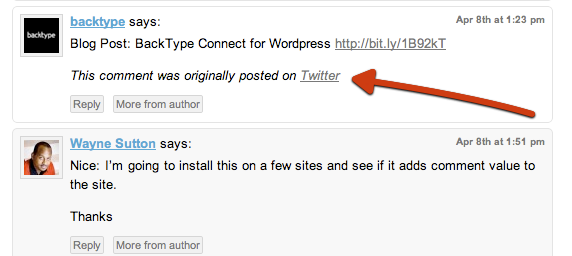 It’s a very powerful plugin (you can see an example with it enabled on The Next Web’s coverage), and will certainly appeal to many bloggers, especially those who typically only see a handful of comments per post. But BackType Connect has some weaknesses that will likely keep larger blogs from using it for now. For one, some of the sources (especially Twitter) can be very spammy. Blog admins can pick and choose which services they’d like to include, but it looks like the filters for services that are enabled need some work (Update: Founder Christopher Golda notes in the comments that you can also use WordPress comment filters to keep spam out). There’s also apparently no way to preserve the original comment threads when importing them, which can make some comments appear totally out of context. I also suspect that some bloggers will object to having comments from their blog imported elsewhere. It’s one thing to present these on BackType’s website, which is essentially a search engine. It’s another thing entirely to take those comments and place them on another blog - and there’s currently no way to prevent BackType from taking your comments, save from not linking to a blog with BackType installed. Disqus, another leading comment startup, recently launched a similar product. Crunch Network: MobileCrunch Mobile Gadgets and Applications, Delivered Daily. |
| A.P. Exec Doesn’t Know It Has A YouTube Channel: Threatens Affiliate For Embedding Videos Posted: 08 Apr 2009 12:57 PM PDT
Here is another great moment in A.P. history. In its quest to become the RIAA of the newspaper industry, the A.P.’s executives and lawyers are beginning to match their counterparts in the music industry for cluelessness. A country radio station in Tennessee, WTNQ-FM, received a cease-and-desist letter from an A.P. vice president of affiliate relations for posting videos from the A.P.’s official Youtube channel on its Website. You cannot make this stuff up. Forget for a moment that WTNQ is itself an A.P. affiliate and that the A.P. shouldn’t be harassing its own members. Apparently, nobody told the A.P. executive that the august news organization even has a YouTube channel which the A.P. itself controls, and that someone at the A.P. decided that it is probably a good idea to turn on the video embedding function on so that its videos can spread virally across the Web, along with the ads in the videos. Frank Strovel, an employee at the radio station who tried to talk some sense into the A.P. executive Twittered yesterday: I was on the phone arguing w/ AP today. We were embedding their YouTube vids on our station’s site. We’re an AP affiliate. And then added: They asked us to taken them down. I asked, “Why do you have a YouTube page w/ embed codes for websites?” Still… they said NO. The story was picked up by the Knoxville News, and then by a local video producer Christian Grantham, who captured the following Skype interview with Strovel in the video below (which is not an A.P. video, so I am going to embed it). Strovel notes that the A.P. accused the station of “stealing their licensed content.” He sounds flumoxed, as he should be. This back and forth during the interview says it all: Grantham: What an idiot! Strovel: I know, I know. Strovel had to pull down all the videos from his Website.
Crunch Network: CrunchGear drool over the sexiest new gadgets and hardware. |
| Polar Rose Combines Facebook Connect With Facial Recognition Technology To Tag Photos On Flickr Posted: 08 Apr 2009 12:12 PM PDT
Polar Rose, a photo tagging startup we wrote about during its private launch, has released a new version of its application that lets you name and tag people in your photos on your Flickr account using your Facebook contacts. Polar Rose will detect people in your photos, let you name the people using your Facebook contact list, and then suggest tags of other photos that include your Facebook contacts. Polar Rose’s technology employs a browser plugin to allow users to tag people in photos anywhere on the web. The startup uses those photos to construct a 3D image of the person, and then make educated guesses as to who is in untagged photos. The new version of Polar Rose will notify that friend on Facebook who has been tagged in a Flickr photo that they've been named in your photos. Your friends can decide if they want their name in public or not (until they sign up and decide for themselves, Polar Rose keeps their identity them private). Unfortunately, Polar Rose’s most recent blog post says that the application is “experiencing a delay in import of photos from Flickr.” Polar Rose’s new technology is compelling but they may have been beat to the punch by Google’s Picasa. Picasa launched facial recognition technology last fall. The latest version of Picasa asks you identify people in your pictures that you haven't tagged yet. Once you do and start uploading more pictures, Picasa suggests tags for people based on the similarity between their face in the picture and the tags you already put in place for them. This is similar to Polar Rose’s application which suggests photos based on your previous tags of Facebook friends. And Face.com is a Facebook app that uses facial recognition to help members locate untagged photos of themselves and their friends. Riya tried facial recognition this but shifted its focus to ecommerce via Like.com. So did Ookles but the startup never launched. Google also threw in the towel on its image labeler. TagCow integrates with Flickr and uses humans to tag photos. But Polar Rose seems to be doing something new with the joint integration of Flickr and Facebook Connect. Making sense out of photos via facial recognition is still a technology that needs to be perfected but Polar Rose is worth a look. That is, when it actually starts working. Crunch Network: CrunchBoard because it’s time for you to find a new Job2.0 |
| Who the Hell Is Enrolling in Journalism School Right Now? Posted: 08 Apr 2009 10:54 AM PDT
Also about a decade ago, one of my oldest friends had graduated with a degree in journalism and was doing an internship at the same paper. It was the late 1990s and everyone needed business reporters, so the job market was booming. It was in this environment that my friend decided to go to journalism school. She reasoned – as well-heeled professionals told her—that the sheer number of connections she'd get would ensure her a greater headstart in the job market than just spending those years working. Fast-forward and my friend no longer works in journalism. Meanwhile, I'm not only gainfully employed, but have managed to make more money every year the industry has declined all around me. I get to travel around the world looking for great stories. I’ve had the privilege of writing one book, and I’m mid-way through another one. Frankly, I've gotten farther in ten years than I thought I would in fifty. I like to joke that I'm "unqualified" to do my job. But I think it was precisely that total lack of journalism training that gave me an edge. I never worked the cops-and-courts beat. I don't know how to write an inverted pyramid story or even really what that is. I do know how to write for different platforms, be scrappy and break news. I've had zero important alum connections and never got an internship at a big daily. And, in hindsight, that's probably the greatest stroke of luck I could have had. Journalism schools are like foot-binding. They force you into a style that a bunch of dinosaurs all agreed was acceptable a zillion years ago. So in an age of blogging, you have no voice. In fact, if I were in J-school now, I'd have my knuckles rapped for using the rhetorical "you" in those last two sentences. Fortunately for me, my feet were never bound. I use the rhetorical you with impunity and a great many other sins that would make a Lou Grant equivalent choke on his bad Styrofoam cup coffee. That means a lot of people hate my writing. It also means a lot of people love my writing. But guess what? Both of those make money in an online news economy. You know what doesn't make money? Rewriting an earnings report according to a formula you learned from a book. Of course, this is all obvious by now, right? When I ask aspiring journalists where they want to be in ten or twenty years, not a single one says The New York Times or The Wall Street Journal. They want to have a famous blog. Some already do. So who the hell are all these people enrolling in journalism schools? Forbes has reported today that enrollment is soaring, even though nearly one-sixth of newspaper jobs have evaporated since 2001, and those left pay an average of $40,000 a year— just slightly more than journalism school will cost you. I know people do crazy things in a recession, but taking out a student loan for a degree that won’t give an edge in a wheezing industry actually makes getting an MBA look smart. It's not that I'm pessimistic about the future for good journalists. Quite the opposite, in fact. Journalism isn't dying; it's just in a period of extreme volatility. And in any time of volatility, there's huge room for opportunity. But you're not going to learn how to exploit it in a stuffy classroom taught by people who got there by working at newspapers. Crunch Network: CrunchBase the free database of technology companies, people, and investors |
| YouTube Quietly Rolls Out AdSense For Video To Claimed Copyrighted Content Posted: 08 Apr 2009 10:25 AM PDT
Youtube is doing everything it can to turn the professionally-produced content on its site into a big source of revenues. Through its Content ID program, it digitally fingerprints the video libraries of 600 content partners and offers those media companies and video creators the option to place ads against any video that contains their copyrighted material. They also have the option to automatically take those videos down, but more than 90 percent opt for the additional ad revenues. Up until now, those ads were just plain-vanilla banner ads and pop-ups. But starting today, YouTube is beginning to roll out its AdSense For Video ads on claimed content. AdSense for Video ads are contextually targeted to the title, text, and tags on the video, or they can be targeted more broadly by genre. For instance, this user-uploaded video showing cartoon clips of Disco Bear is identified as content belonging to Mondo Media, and the ad I see on the side is appropriately enough for the animated movie The Tale of Despereaux. Unfortunately, that is not the AdSense for Video ad. The AdSense ad is an overlay that pops up at the bottom of the player during the video. All I get right now is a Google filler ad for its Chrome browser (see screenshot above). But YouTube assures me these will become more relevant as the program is rolled out today. As another example, when I watch this home improvement video about cleaning windows an AdSense text ad for window cleaning estimates sometimes appears at the bottom. This video isn’t claimed content, but it shows how AdSense for Video can turn up more appropriate ads than run-of-site banner ads. You can get weird juxtapositions or bad matches as well (see above). Overall, though, I’ve been able to confirm that the clickthrough rates on AdSense for Video ads are higher than generic banner ads. And, in general, Content ID partners generate twice as many views (and, thus, twice as many ad impressions) for their videos than if they solely relied on their own video uploads and channels within YouTube. This is just one dial YouTube is turning up as it seeks to shed its cost-center status within Google. Other efforts at YouTube include click-to-buy links, paid downloads, and paid search results. But squeezing dollars from the (growing) sliver of professionally-produced content on the site seems to be an especially fruitful area. Over the past few months, for instance, YouTube has been allowing more and more content partners to sell their own ad inventory inside YouTube on a revenue-split basis. Since I last wrote about this, partners ranging Disney to Machinima have been invited into that particular bring-your-own-advertising program.
Crunch Network: CrunchGear drool over the sexiest new gadgets and hardware. |
| One Brilliant Hoax Later, Hotelicopter Joins The Hotel Aggregation Fray Posted: 08 Apr 2009 09:59 AM PDT Just over a week ago a number of blogs presented us with Hotelicopter, the world’s first flying hotel, featuring a modified Soviet helicopter decked out to create a five-star aerial resort. Of course, this turned out to be a total hoax in honor of April Fools day (albeit an early one) - Hotelicopter is in fact a web startup, and it launches today to the public. Hotelicopter is a new hotel booking site that allows users to search across 30 travel sites for rooms at over 150,000 hotels. The site is also notable for being the first such hotel aggregator to include Facebook Connect integration, which it can use to power social hotel recommendations and to also let your friends know where you’re staying. The site has a clean interface, allowing users to use sliding bars to narrow down their search results by price, star rating (based on reviews from TripAdvisor), and checkboxes for amenities you might want (internet access, included breakfast, etc). Prices are clearly noted next to rooms, and users can directly book their rooms without having to jump through other hoops. All in all, it seems to work well, but there just doesn’t seem to be a whole lot distinguishing Hotelicopter from other sites like Kayak. That said, the people behind Hotelicopter clearly have a good sense of humor (and marketing), so they may be able to make a name for themselves in the crowded space.
Crunch Network: CrunchGear drool over the sexiest new gadgets and hardware. |
| You are subscribed to email updates from TechCrunch To stop receiving these emails, you may unsubscribe now. | Email delivery powered by Google |
| Inbox too full? | |
| If you prefer to unsubscribe via postal mail, write to: TechCrunch, c/o Google, 20 W Kinzie, Chicago IL USA 60610 | |

 I’ve been tracking the progress of Vienna, Austria-based music startup
I’ve been tracking the progress of Vienna, Austria-based music startup 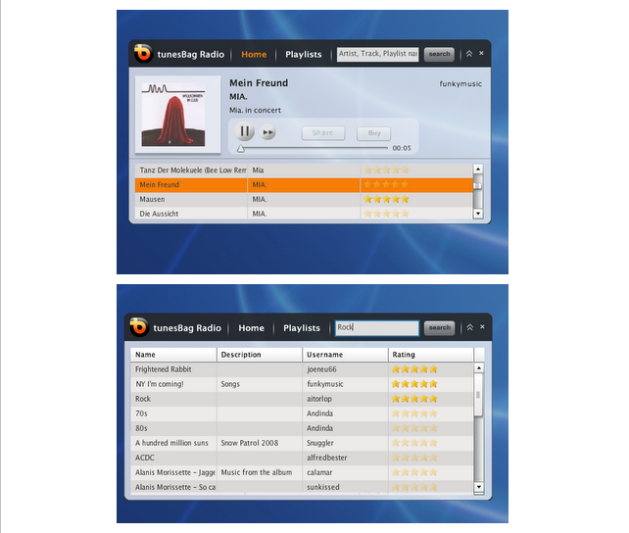






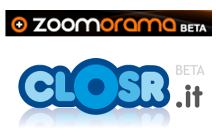 To be perfectly honest, I’d never heard of
To be perfectly honest, I’d never heard of 






 For months, popular music store
For months, popular music store 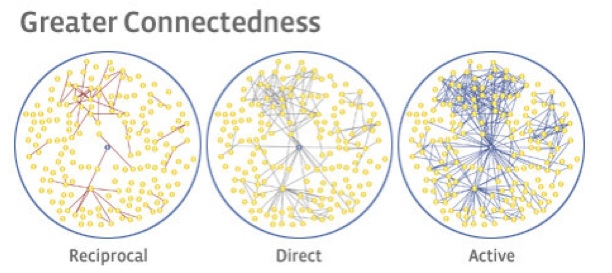
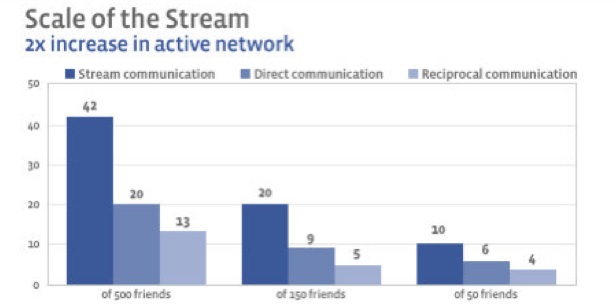


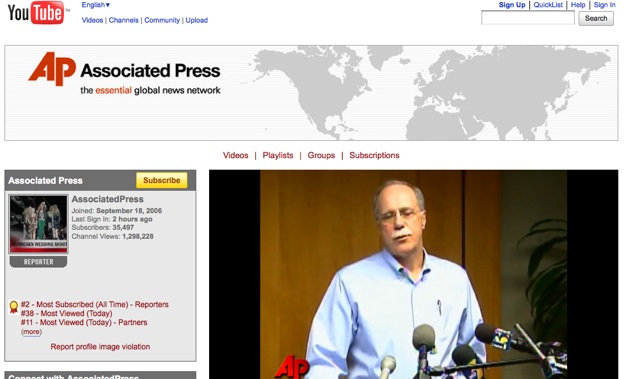
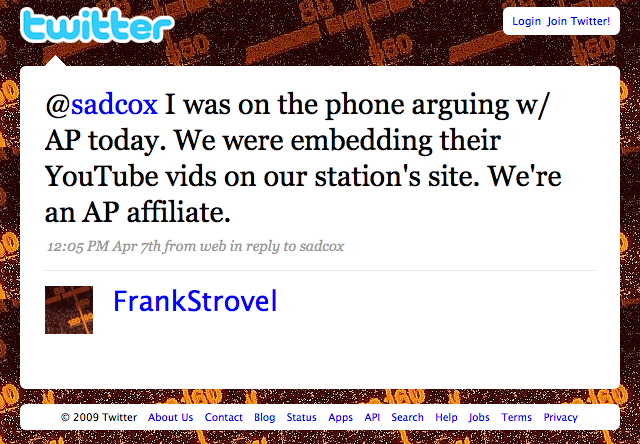
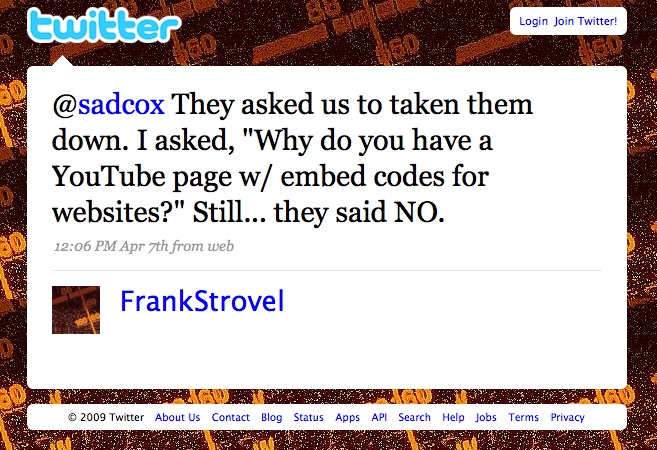

 A little more than ten years ago, I stumbled out of a liberal arts college with a mediocre GPA into a job with a weekly business journal with a smallish circulation in my hometown of Memphis, Tenn. I'd never studied business or journalism, and I came from a family of academics. I didn't even really understand what a stock was. But there was something I loved about it. I had great editors, and I was learning a ton everyday about everything from how to get information out of people to where I was supposed to put a comma and where I was definitely not supposed to put a comma. Like most great careers, I just sort of fell into it, and I've been there ever since. I've covered everything from old money cotton brokers to Facebook, and I've met some of the most fascinating people in the world along the way.
A little more than ten years ago, I stumbled out of a liberal arts college with a mediocre GPA into a job with a weekly business journal with a smallish circulation in my hometown of Memphis, Tenn. I'd never studied business or journalism, and I came from a family of academics. I didn't even really understand what a stock was. But there was something I loved about it. I had great editors, and I was learning a ton everyday about everything from how to get information out of people to where I was supposed to put a comma and where I was definitely not supposed to put a comma. Like most great careers, I just sort of fell into it, and I've been there ever since. I've covered everything from old money cotton brokers to Facebook, and I've met some of the most fascinating people in the world along the way.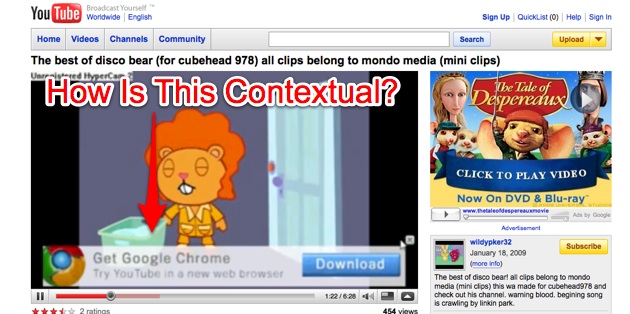
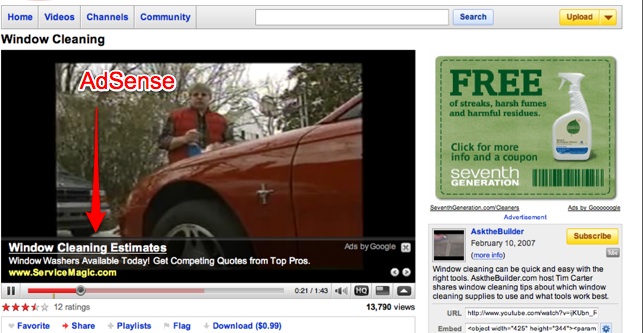

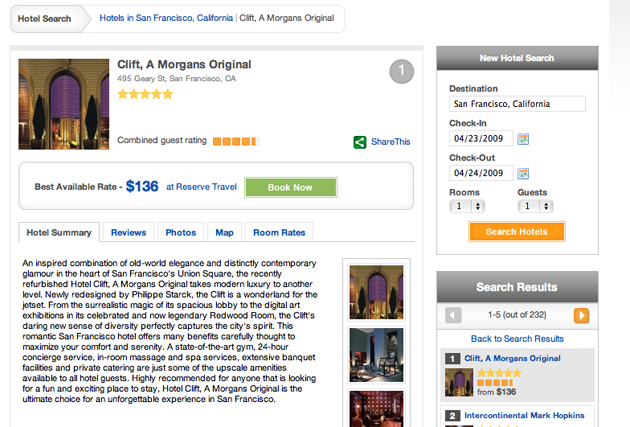
No comments:
Post a Comment